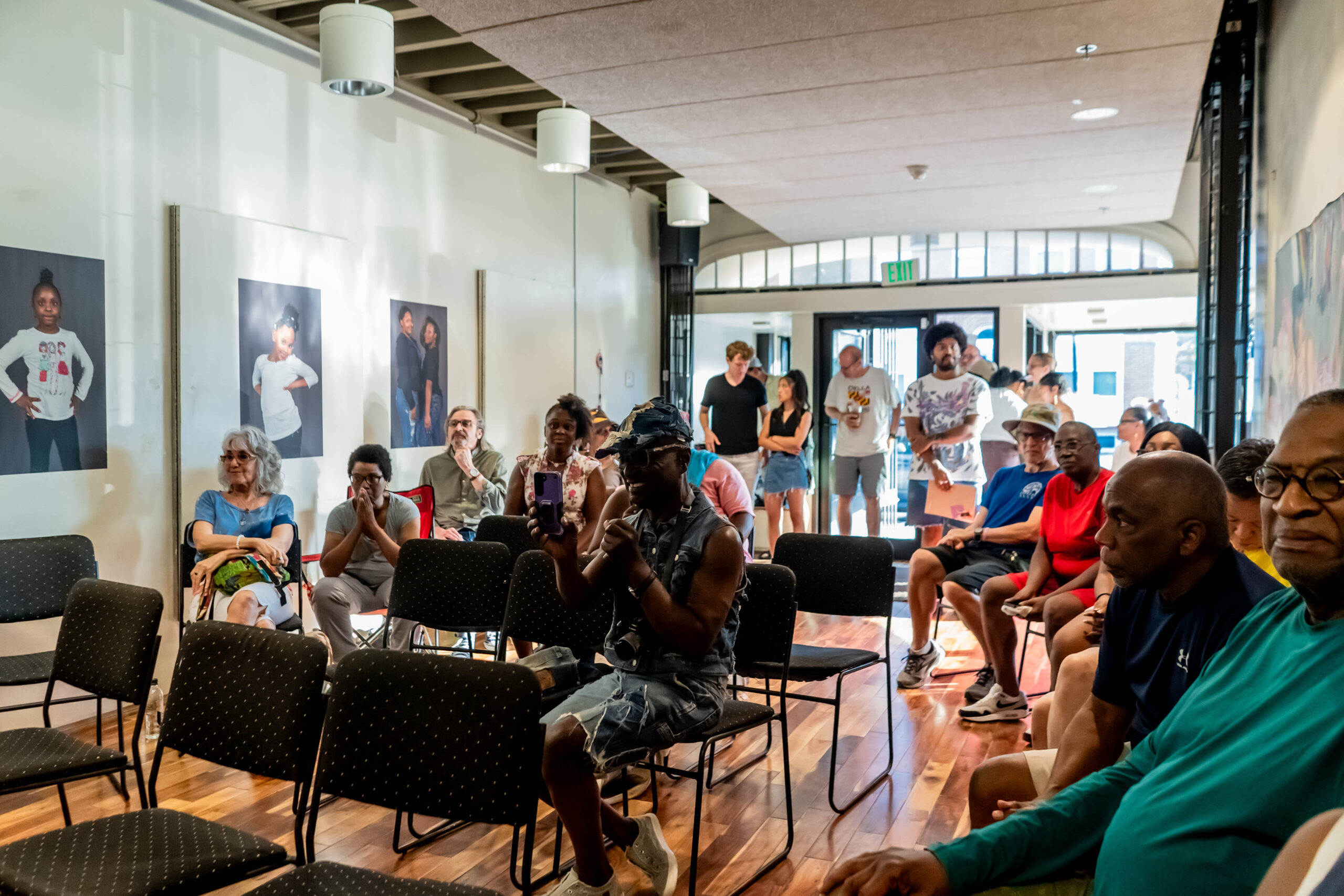On a hot summer night in Baltimore’s Penn-North district, a leaderless sextet of auspicious local musicians offered an incredible performance for a packed gallery space within the main showroom of the Jubilee Arts community space.
The ensemble, known as the Baltimore Jazz Collective, is a part of a long line of historic Baltimore jazz musicians and composers. Despite being steeped in the music’s history, the Collective represents the best of what jazz can accomplish. The Collective also represents some of the most influential movers and shakers of Baltimore’s jazz community. The crux of their work and purpose is to highlight one another’s compositions in a live setting as well as the works of influential jazz artists of the past, a mission which shone beautifully in the intimate community arts space in west Baltimore.
Trumpet maestro Sean Jones founded the ensemble in 2019 after a fruitful stint with the SFJAZZ Collective encouraged him to create something similar in Baltimore. He gathered a group of talented, well-known local musicians who were deeply embedded in the community and knowledgeable about Baltimore’s history across social, musical and cultural dimensions: Todd Marcus on bass clarinet, Alex Brown on keys, Kris Funn on upright bass, Qunicy Phillips on drums, and composer, vocalist and tap dancer Brinae Ali. That core membership has shifted some over the years, and for July 5’s performance at Jubilee Arts, Blake Meister replaced Funn on bass, and Eric Kennedy replaced Phillips on drums.
That the group found the time to assemble is a bit of a miracle, given each members’ individual commitments and community prowess. For example, Jones holds the Richard and Elizabeth Case Chair as a professor at the Peabody Institute; Marcus runs a nonprofit dedicated to addressing poverty in his west Baltimore neighborhood; Ali is an adjunct professor at both Queens College and Long Island University; and Kennedy – whose community building activities earned him the 2023 Baltimore Jazz Hero award from the Jazz Journalist Association – is one of the most in demand drummers in jazz today.
The performance took place at Jubilee Arts, a component of Intersection of Change, the west Baltimore non-profit which Marcus co-founded and currently runs. Beyond that personal connection, Jubilee Arts is aligned with the deep roots of jazz in Baltimore, being located on a historic strip where countless jazz venues once played host to the likes of Billie Holiday, Cab Calloway and others.
Audience-wise, a mix of musicians, jazz enthusiasts, and community members – including An Die Musik venue owner Henry Wong and flutist Andrea Brachfeld – all comfortably converged to hear the lively sounds of the Collective. The mix of wide-ranging audience members set the stage for a night where individual creative genius shined and a community was celebrated.

Each Collective member’s individual style is seamlessly embedded within the DNA of the ensemble’s foundational sound; Jones experimental and experiential, Marcus, introspective, Ali, expressive and eclectic. Though Jones is the founder, the group has no real leader, which allows every player’s unique contribution and style to blend perfectly into the crux of their well-rounded, genre-flexible sound.
Throughout the night, the Collective performed original compositions as well as music from local historical jazz composers, including the great Gary Bartz, and a piece inspired by, and in tribute to, the legendary Baby Laurence. Though most of the group’s original compositions kept traditional straight-ahead forms, their performance was refreshing and original. It featured drama, crescendos, and emotionally evocative peaks and valleys. Their entire performance was captivating and charming.
One highlight performance was Brown’s composition Red Lining, a stark and sinister piece that explores the historical injustices faced by Baltimore’s Black working class community. The piece is reminiscent of the 1970s with an overarching smooth-somberness. The horn and keyboard melodies were typical of the funk-soul sound of the time period, and the piece’s depth and interplay of volume, modes, and rising and falling action convey the resilience of the Black working class community.
Another piece inspired by the streets of Baltimore was Jones’s Eutaw. The piece reflected the beautiful chaos of Eutaw Street, a bustling corridor in the Mount Vernon neighborhood where Jones and Ali – who happen to be husband and wife in addition to being musical collaborators – once resided. The composition’s esoteric waves encapsulated Eutaw Street, with a stable horn section balanced out by a rhythm section that traveled through different syncopations of hip hop, soul, and blues.
One unique aspect to the Collective is just how integral Ali’s role is as a dancer, musician, and composer. In many ensembles, dancers may be included as ornamentation, but rarely are they integrated so equally to the rest of the band. Ali’s composition For Baby showcased this beautifully, and was written as an homage to legendary jazz tap dancer Baby Laurence, himself a native son of Baltimore.
Jazz and tap are somewhat kindred spirits, with both art forms developing alongside each other in early 1900s New Orleans. However, contemporary jazz contexts rarely feature tap dancers, making Ali’s status as a working jazz tap dancer in 2024 unique. Her talent in this field was spellbinding, adding an additional artistic dimension to the performance.
In every moment of the performance, the Collective went beyond simple entertainment, and pushed towards an enrichment of Baltimore’s deep history within the wider jazz canon. The strong, positive vibes created by the ensemble, rooted in the collective memberships’ finely honed chops and spirited interpretations, left the entire room energized, enlightened and inspired.








Join the Conversation →